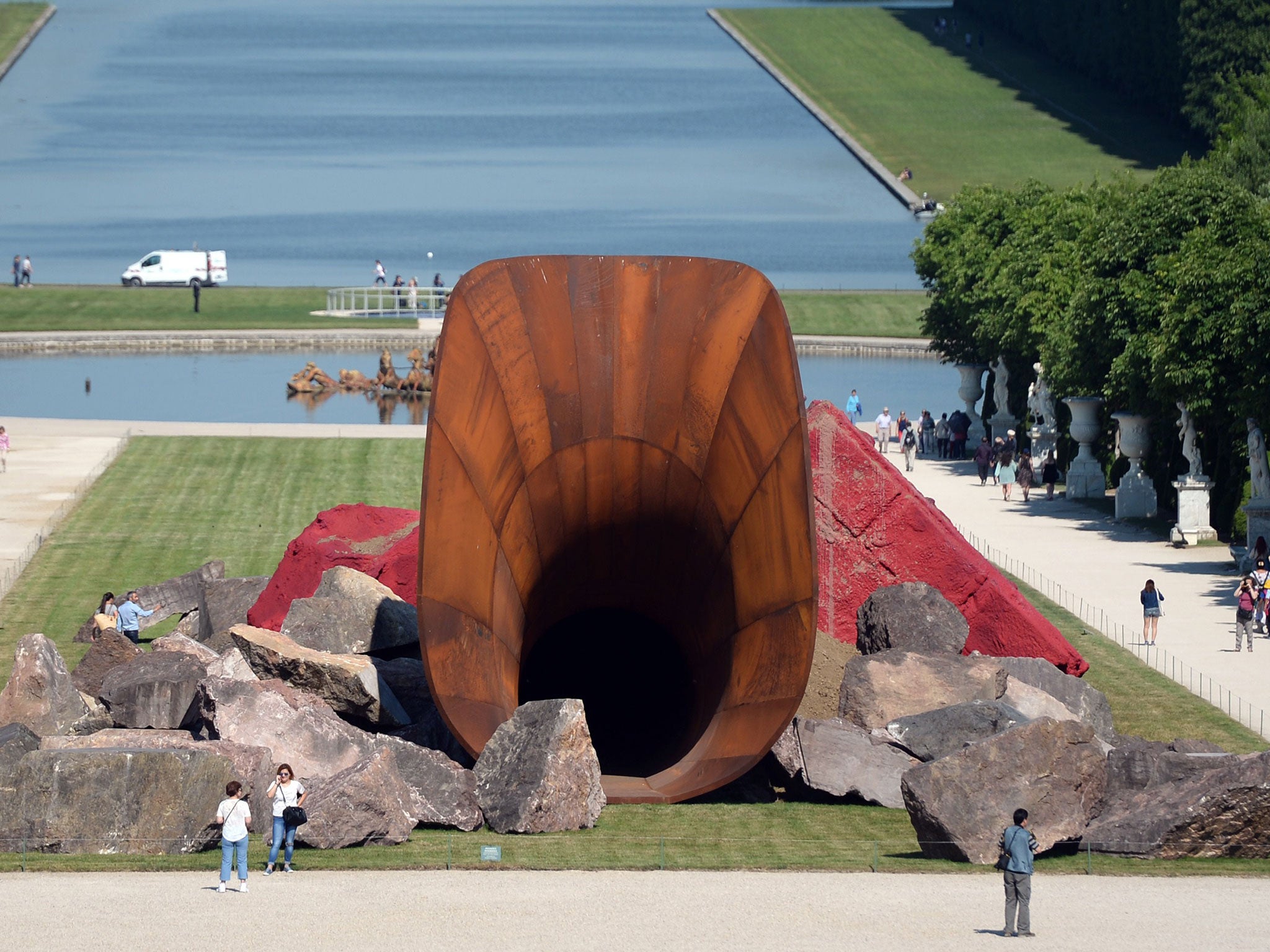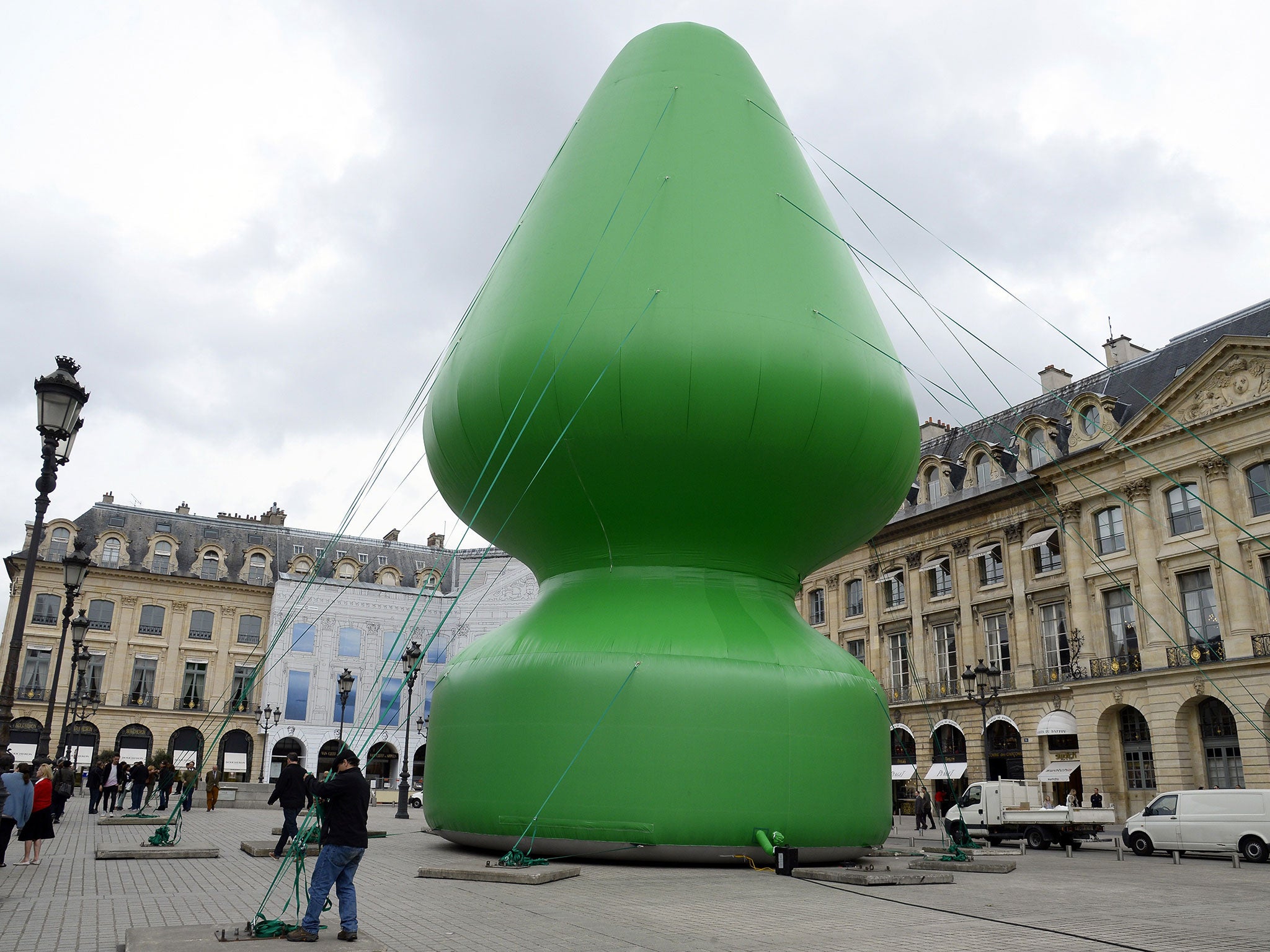Anish Kapoor 'queen's vagina' sculpture vandalised with paint at Palace of Versailles
The damage is slight but the 30 feet high statue might have to be dismantled

Your support helps us to tell the story
From reproductive rights to climate change to Big Tech, The Independent is on the ground when the story is developing. Whether it's investigating the financials of Elon Musk's pro-Trump PAC or producing our latest documentary, 'The A Word', which shines a light on the American women fighting for reproductive rights, we know how important it is to parse out the facts from the messaging.
At such a critical moment in US history, we need reporters on the ground. Your donation allows us to keep sending journalists to speak to both sides of the story.
The Independent is trusted by Americans across the entire political spectrum. And unlike many other quality news outlets, we choose not to lock Americans out of our reporting and analysis with paywalls. We believe quality journalism should be available to everyone, paid for by those who can afford it.
Your support makes all the difference.Vandals have sprayed yellow paint on a giant sculpture, wrongly labelled the "queen’s vagina", installed by the British artist Anish Kapoor at the Palace of Versailles.
Although the damage was slight, Mr Kapoor spoke today of his "sadness" at the "malaise in France" which produced what is assumed to be a political attack on his work.
Although the Palace of Versailles announced that the 30 feet high statue would be cleaned in situ, Mr Kapoor told the newspaper Le Figaro that it might have to be dismantled.
Mr Kapoor said that the attack revealed "a certain intolerance for art" on the right wing of French politics.
"It is the work of a small fraction of people, for whom any creative act threatens a sacred past…It is a sad nuisance," he said.
The sculpture, which was sprayed with yellow paint, is part of an exhibition of works by Mr Kapoor, 62, in the gardens of the Palace of Versailles until the end of October. The real name of the vandalised work is "Dirty Corner". It consists of an enormous rusty funnel, a jumble of blocks of uncut marble and several half-completed metal boilers.
Mr Kapoor has said that the funnel could represent, among other things, a vagina, but he disowned a report in a French Sunday newspaper which said that he referred to his work as the "Queen's Vagina".
The phrase – and the simple presence of Mr Kapoor's sculpture among the classical gardens of Versailles – has generated fury on the French Catholic-conservative Right and on the xenophobic ultra-Right.
A sculpture by the American artist, Paul McCarthy, said to resemble a sex toy, was vandalised by right wing activists and then removed from the Place Vendôme in Paris last year.

French royalists and conservatives said that Mr Kapoor's "vagina" sculpture was insulting to the memory of Queen Marie-Antoinette (guillotined in 1793). The French far right complained that the presence of six of Mr Kapoor's contemporary sculptures among the manicured gardens of Versailles was an insult to French history.
Robert Menard, the Front National Mayor of Beziers, tweeted earlier this month: "Giant vagina. Contemporary art continues to disfigure our heritage."
Asked by The Independent two weeks ago, Mr Kapoor – one of the most respected artists in the world – denied ever calling the sculpture the "Queen's Vagina". He said that his explanations of the work had included references to vaginas but he had not mentioned Marie-Antoinette or to any other queen.
"I don’t see why it' problematic (to mention vaginas)," he said. "We all have one - or at least we all have something."
The whole controversy missed the point, said the Bombay-born and London-based Mr Kapoor.
"I am not interested in singular implications (in art)," he said. "It kills the work."
Sexuality, he said, was just one of many possible reactions to "Dirty Corner". Nor, he said, were his sculptures intended as an insult to André Le Nôtre (1613-1700) who created the Versailles gardens.
"Le Nôtre was a great artist, one of the greatest artists of all time," Mr Kapoor said.
Le Nôtre imposed a symmetrical vision which was meant to convey a sense of "the eternal", of never-changing "power", the sculptor said. When he was invited to exhibit at Versailles (the eighth contemporary artist to be honoured in this way), he decided that he should "excavate"below that "perfect surface".
He attempted to penetrate the rational, frozen surface of the formal gardens to "subterranean" forces which were "dark" and "disturbing".
Join our commenting forum
Join thought-provoking conversations, follow other Independent readers and see their replies
Comments